Do you have a question about the Yamaha Programmable Mixer 01 and is the answer not in the manual?
Detailed description of the controls and features found on the ProMix 01's top panel.
Explanation of the various input and output connectors and switches on the rear panel.
Visual representation of the mixer's internal signal flow and functional blocks.
Comparison of ProMix 01 features to traditional analog mixer interfaces.
General overview of the mixer's interface elements and their organization.
Detailed explanation of the mixer's graphic LCD display and its information.
Explanation of Cursor buttons, PARAMETER wheel, and ENTER button for navigation.
Details on SEL buttons for channel selection and control.
Lists and explains functions accessed via the LCD menus.
Controls for Phantom Power, Pad, and Gain on input channels.
How to monitor signal levels and adjust signal phase polarity.
Details on EQ operation, library, and presets.
Description of motorized faders and channel ON/OFF functionality.
Controls for panning, balance, and stereo width adjustments.
Overview of auxiliary sends, returns, and internal multi-effects processors.
Steps to send signals, return processed signals, and set up effects.
Details on using SEND1/SEND2 for effects and RTN1/RTN2 for returns.
How to recall, edit, and store effects programs.
Detailed list of parameters for preset effects.
Configuration and usage of SEND3/SEND4 for external processing.
Setting up SEND3 and SEND4 as a stereo pair for combined control.
Panning and balancing controls for SEND3-4 in stereo mode.
Explanation of CUE functionality, modes, and group cueing.
How to select CUE modes and identify signal sources.
Display information for different channel types when CUE is active.
How to group faders for simultaneous control and monitor groups via CUE.
Diagram illustrating fader grouping functionality.
Method for pairing channels for stereo operation.
Diagram showing channel pairing linkages.
What scene memories are, what they store, and the edit buffer.
Procedure for saving mix scenes and naming them.
How to recall stored mix scenes.
Methods to prevent accidental overwriting of scene memories.
Introduction to the mixer's dynamics processors and preset programs.
Explanation of Compressor and Limiter functions and parameters.
Explanation of Gate function and parameters.
Explanation of Ducking function and parameters.
How to connect processors to channels, sends, and outputs.
Understanding the GR and output level meters for processors.
Configuring patch points for processors as pre or post fader.
How to recall, edit, and store dynamics processor programs.
Detailed list of parameters for preset dynamics programs.
Overview of MIDI capabilities, connections, and menus.
Setting up MIDI transmission and reception channels.
Linking Program Changes to mix scenes for automation.
Assigning Control Changes to mix parameters for real-time control.
Data transfer procedures using Bulk Dump/Request.
Managing local control of faders and buttons via MIDI.
Selectively outputting mix scene data as MIDI Control Changes.
How to use the built-in sine wave oscillator for testing and setup.
Procedure to check the internal RAM backup battery status.
Resetting the mixer to factory settings and calibrating faders.
Solutions for common operational problems and error messages.
Visual guide to navigating the mixer's LCD functions.
Instructions for applying a button protector to prevent accidental presses.
Explanation of data structures for mix scenes, control, and program data.
List of system and MIDI error messages and their meanings.
List of compatible external devices for use with the ProMix 01.
Technical specifications for the mixer's performance and connectivity.
Technical details for digital audio and MIDI interface specifications.
Definitions of technical terms used throughout the manual.
Diagram illustrating signal levels and data flow within the mixer.
Physical dimensions of the mixer unit.
Information on optional rack-mount ears and wooden side panels.
Table mapping mix scenes to MIDI program changes.
Table mapping MIDI control changes to mixer parameters.
Explanation of MIDI message structure and data transmission.
List of button numbers and their corresponding names for MIDI mapping.
Chart detailing MIDI message transmission and recognition.
Detailed description of the controls and features found on the ProMix 01's top panel.
Explanation of the various input and output connectors and switches on the rear panel.
Visual representation of the mixer's internal signal flow and functional blocks.
Comparison of ProMix 01 features to traditional analog mixer interfaces.
General overview of the mixer's interface elements and their organization.
Detailed explanation of the mixer's graphic LCD display and its information.
Explanation of Cursor buttons, PARAMETER wheel, and ENTER button for navigation.
Details on SEL buttons for channel selection and control.
Lists and explains functions accessed via the LCD menus.
Controls for Phantom Power, Pad, and Gain on input channels.
How to monitor signal levels and adjust signal phase polarity.
Details on EQ operation, library, and presets.
Description of motorized faders and channel ON/OFF functionality.
Controls for panning, balance, and stereo width adjustments.
Overview of auxiliary sends, returns, and internal multi-effects processors.
Steps to send signals, return processed signals, and set up effects.
Details on using SEND1/SEND2 for effects and RTN1/RTN2 for returns.
How to recall, edit, and store effects programs.
Detailed list of parameters for preset effects.
Configuration and usage of SEND3/SEND4 for external processing.
Setting up SEND3 and SEND4 as a stereo pair for combined control.
Panning and balancing controls for SEND3-4 in stereo mode.
Explanation of CUE functionality, modes, and group cueing.
How to select CUE modes and identify signal sources.
Display information for different channel types when CUE is active.
How to group faders for simultaneous control and monitor groups via CUE.
Diagram illustrating fader grouping functionality.
Method for pairing channels for stereo operation.
Diagram showing channel pairing linkages.
What scene memories are, what they store, and the edit buffer.
Procedure for saving mix scenes and naming them.
How to recall stored mix scenes.
Methods to prevent accidental overwriting of scene memories.
Introduction to the mixer's dynamics processors and preset programs.
Explanation of Compressor and Limiter functions and parameters.
Explanation of Gate function and parameters.
Explanation of Ducking function and parameters.
How to connect processors to channels, sends, and outputs.
Understanding the GR and output level meters for processors.
Configuring patch points for processors as pre or post fader.
How to recall, edit, and store dynamics processor programs.
Detailed list of parameters for preset dynamics programs.
Overview of MIDI capabilities, connections, and menus.
Setting up MIDI transmission and reception channels.
Linking Program Changes to mix scenes for automation.
Assigning Control Changes to mix parameters for real-time control.
Data transfer procedures using Bulk Dump/Request.
Managing local control of faders and buttons via MIDI.
Selectively outputting mix scene data as MIDI Control Changes.
How to use the built-in sine wave oscillator for testing and setup.
Procedure to check the internal RAM backup battery status.
Resetting the mixer to factory settings and calibrating faders.
Solutions for common operational problems and error messages.
Visual guide to navigating the mixer's LCD functions.
Instructions for applying a button protector to prevent accidental presses.
Explanation of data structures for mix scenes, control, and program data.
List of system and MIDI error messages and their meanings.
List of compatible external devices for use with the ProMix 01.
Technical specifications for the mixer's performance and connectivity.
Technical details for digital audio and MIDI interface specifications.
Definitions of technical terms used throughout the manual.
Diagram illustrating signal levels and data flow within the mixer.
Physical dimensions of the mixer unit.
Information on optional rack-mount ears and wooden side panels.
Table mapping mix scenes to MIDI program changes.
Table mapping MIDI control changes to mixer parameters.
Explanation of MIDI message structure and data transmission.
List of button numbers and their corresponding names for MIDI mapping.
Chart detailing MIDI message transmission and recognition.
| Brand | Yamaha |
|---|---|
| Model | Programmable Mixer 01 |
| Category | Music Mixer |
| Language | English |
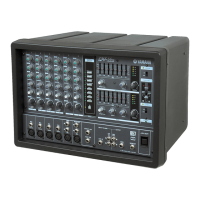
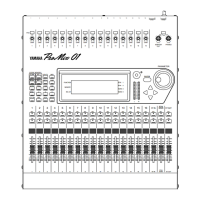
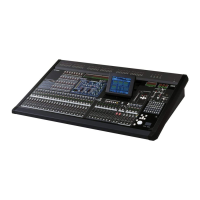




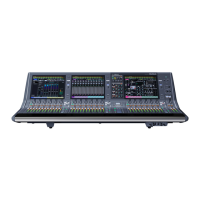
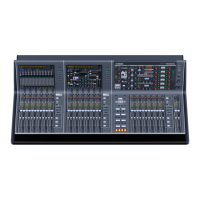
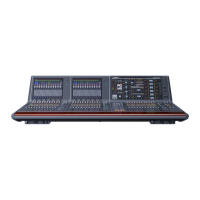
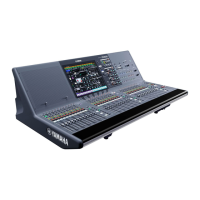
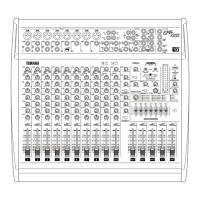
